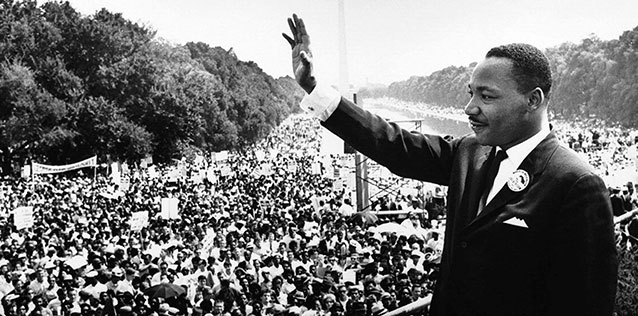A Blog Post by Forest Whitaker on Martin Luther King Day 2022

When we think of Martin Luther King Jr., we often picture large meetings and eloquent speeches that imprinted a movement of historical magnitude. These images hold a powerful force of inspiration, but they can also be a bit intimidating, leading many of us to believe that history happens outside of us — the domain of exceptional and highly charismatic figures. Yet, nothing is further from the message that Dr. King strived to deliver in a time when the United States were still trapped by the indignity of Jim Crow laws. Whenever I revisit his iconic “I have a dream” speech, I’m struck that his remarks aren’t just about the transformation of a whole country, but about the beautiful life that every individual American could and should be able to have irrespective of race, gender or economic status. Ultimately, Dr. King’s dream was for us to have conversations that would result in actions that can reach across our divides.
Sadly, this message is still pertinent today; each day, the news is ripe with the latest example of the ways in which our nation is riddled with contradictions and inequalities. This longevity could turn anyone into a pessimist, full of desperation and cynicism. But the era that Martin Luther King Jr.’s occupied was even worse, since African Americans were widely viewed as less than complete citizens. Dreaming that there could be an equal conversation or dialogue among people of different races verged on utopianism.
Clearly, the capacity for hope that he demonstrated was bottomless. This is an aspect of his legacy that has inspired me throughout my life, and which helped to lead me to establish an organization of own. With WPDI, I have made it my goal to empower young people and women from conflict and violence-affected areas to become peacemakers and community leaders. One of our main activities is to teach children and youths about the basics of conflict resolution, and then have them apply these skills to their own environments. The first thing they learn is that conflict is integral to human life; when people have differing interests or when different people want the same things, tensions are bound to happen. But this isn’t necessarily a bad thing — we also want them to learn is that conflict doesn’t have to result in violence and war. The initial (and probably the most critical) step towards resolving conflict is to actually recognize that they exist. Being able to identify a problem is the beginning of the solution. This is not something abstract or complicated – it is a matter of awareness, a life skill. Anyone can understand that. The children who participate in our programs understand this. I am always moved when I visit schools and children or adolescents will tell me how they applied their conflict resolution skills to help classmates address a conflict that had arose among them, or how they could even get arguing parents or relatives to sit down, voice their frustrations, and in many cases, find a common ground. Those children have acquired the power to create spaces for tough conversations.
If children can learn this in countries as disparate as Mexico, South Africa, South Sudan, Uganda or the United States (the five countries where WPDI operates such programs), it is easy to imagine that anyone can. And certainly, once we start a program in a school, it does not take long before teachers, the adults in the room, ask to be trained in conflict resolution as well. So, we do train thousands of adults every year. We even had cases of police personnel reaching out to us in South Sudan, a country at war. This first surprised me and got me to ponder for a bit of time before realizing that, for police forces, there is value in having alternatives skills that broaden the scope of the responses one can bring to conflict. All conflicts do not have to call for the use of force or degenerate into acts of violence. If children and police can learn this, so should we. This is probably one of the most important concerns we should have as citizens as we observe Martin Luther King Day: how do we manage to engage in difficult conversations among people who perceive themselves as being drastically different from each other?
This is one of the questions that Dr. King asked more or less directly. In doing this, he interpreted the motto of our republic – “E pluribus, unum” (“From many, one”), with a logical rigor that defied imagination of the time. Stating that being of many races is the foundation of our unity was and remains unsettling to many of us. For some, it can be newly challenging as our society becomes more and more diverse. But, this, he taught, can be overcome, if we recognize that our differences and even our conflicts do not have to divide us. It is my hope that, in the months and years to come, we will have the fortitude and the courage to heed the lesson of Dr. Martin Luther King, Jr. and start to converse in earnest.